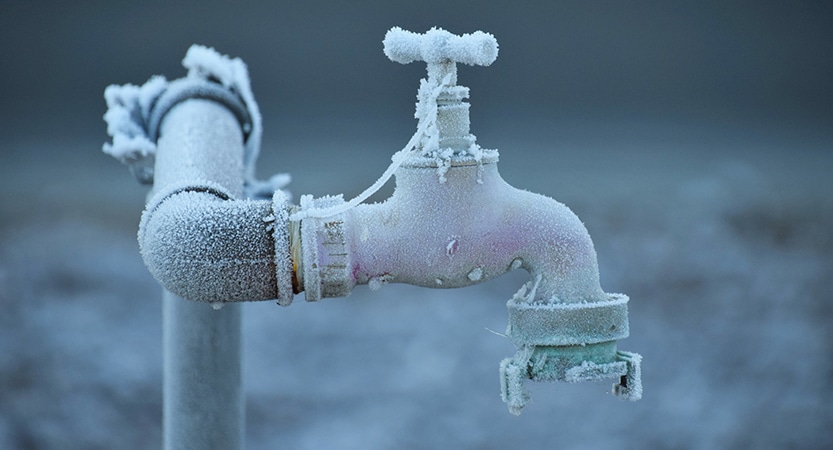Essential Advice for Preventing Frozen Plumbing in Winter Conditions
Essential Advice for Preventing Frozen Plumbing in Winter Conditions
Blog Article
Are you currently interested in know-how around 6 Ways to Prevent Frozen Pipes?

Cold weather can wreak havoc on your pipes, especially by freezing pipes. Here's just how to stop it from occurring and what to do if it does.
Intro
As temperatures decrease, the threat of icy pipelines rises, possibly resulting in expensive repairs and water damage. Comprehending exactly how to avoid frozen pipelines is essential for home owners in cool climates.
Avoidance Tips
Shielding at risk pipelines
Cover pipes in insulation sleeves or utilize heat tape to safeguard them from freezing temperature levels. Concentrate on pipelines in unheated or outside locations of the home.
Home heating methods
Keep indoor areas effectively heated up, specifically locations with plumbing. Open up cupboard doors to allow cozy air to distribute around pipelines under sinks.
How to determine icy pipelines
Look for lowered water flow from faucets, uncommon odors or noises from pipelines, and visible frost on revealed pipes.
Long-Term Solutions
Architectural adjustments
Think about rerouting pipelines far from exterior wall surfaces or unheated areas. Include additional insulation to attic rooms, cellars, and crawl spaces.
Updating insulation
Invest in high-grade insulation for pipelines, attics, and walls. Proper insulation helps preserve constant temperature levels and minimizes the threat of icy pipelines.
Safeguarding Outdoor Plumbing
Garden hoses and exterior faucets
Detach and drain yard hose pipes before winter. Mount frost-proof spigots or cover outdoor taps with insulated caps.
Understanding Icy Pipelines
What causes pipes to ice up?
Pipes freeze when revealed to temperature levels below 32 ° F (0 ° C) for prolonged periods. As water inside the pipelines freezes, it expands, taxing the pipe walls and possibly triggering them to burst.
Dangers and problems
Frozen pipes can bring about water supply interruptions, home damage, and expensive repair services. Ruptured pipelines can flood homes and cause comprehensive structural damage.
Indicators of Frozen Pipes
Identifying icy pipelines early can stop them from breaking.
What to Do If Your Pipelines Freeze
Immediate activities to take
If you presume frozen pipes, keep taps open up to soothe stress as the ice melts. Use a hairdryer or towels soaked in warm water to thaw pipes slowly.
Conclusion
Preventing icy pipes calls for positive procedures and quick feedbacks. By comprehending the reasons, signs, and safety nets, property owners can safeguard their pipes throughout cold weather.
5 Ways to Prevent Frozen Pipes
Drain Outdoor Faucets and Disconnect Hoses
First, close the shut-off valve that controls the flow of water in the pipe to your outdoor faucet. Then, head outside to disconnect and drain your hose and open the outdoor faucet to allow the water to completely drain out of the line. Turn off the faucet when done. Finally, head back to the shut-off valve and drain the remaining water inside the pipe into a bucket or container. Additionally, if you have a home irrigation system, you should consider hiring an expert to clear the system of water each year.
Insulate Pipes
One of the best and most cost-effective methods for preventing frozen water pipes is to wrap your pipes with insulation. This is especially important for areas in your home that aren’t exposed to heat, such as an attic. We suggest using foam sleeves, which can typically be found at your local hardware store.
Keep Heat Running at 65
Your pipes are located inside your walls, and the temperature there is much colder than the rest of the house. To prevent your pipes from freezing, The Insurance Information Institute suggests that you keep your home heated to at least 65 degrees, even when traveling. You may want to invest in smart devices that can keep an eye on the temperature in your home while you’re away.
Leave Water Dripping
Moving water — even a small trickle — can prevent ice from forming inside your pipes. When freezing temps are imminent, start a drip of water from all faucets that serve exposed pipes. Leaving a few faucets running will also help relieve pressure inside the pipes and help prevent a rupture if the water inside freezes.
Open Cupboard Doors
Warm your kitchen and bathroom pipes by opening cupboards and vanities. You should also leave your interior doors ajar to help warm air circulate evenly throughout your home.

I am very fascinated by How to Prevent Your Pipes From Freezing and I really hope you enjoyed the new entry. Do you know about someone else who is serious about the subject? Do not hesitate to share it. We love your readership.
Customer Reviews Report this page